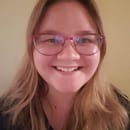Not all disabilities are visible, and not all are constant. Sometimes, they’re hard to see and fluctuate in intensity. It is a silenced community, hushed by a lack of understanding and compassion. I am part of this community. People who know me, know that it is no secret that I’m disabled, but most tend to focus on my bipolar or borderline personality disorder, failing to hear me discuss my other medical problems. I am a member of a community where judgmental stares and disbelief are constantly being held up to our throats. If we celebrate the International Day for Persons with Disabilities, we absolutely must include those suffering from invisible and episodic illnesses, because while you cannot see our sickness all the time, it doesn’t mean it’s not there.
In my case, the first nodules started appearing in late May of 2010. Erythema nodosum is a very painful, rare skin condition that creates red and inflamed nodules in the fatty layer of skin. It mostly affects women, and only 2 in 10,000 people per year will get it. My first time was in a warm spring, leaking into a much-anticipated summer. I would be graduating grade 8; going from an Agnew bulldog to a Hammarskjold viking. This is when my family would go camping with my grandparents every weekend, and as I have several allergies, my mother brushed them off as hives. They looked like hives, and whenever I’d get them in the past, they hurt instead of itch. We then came to the conclusion that the large red bumps on my legs were caused by an allergy to something. I was dosed with antihistamines and told to continue playing outside, and that the spots would be gone within a few days.
A few days passed. A week. Two weeks. The bumps were still there, rapidly multiplying. The fresh ones were a bright rosy red, and deeply plump. Running my hands over them, I could feel the swollen tissue underneath. The old ones seemed to die off, becoming flatter and wider, as if they deflated. They turned into a sickly blue-purple, as if I was bruising. To my horror, the medicine wasn’t working in the slightest. Every day, I was in more and more pain. I was excused from gym class and had to bring a pillow to sit on at school. Everyone laughed at the embroided cushion, and the way I painstakingly waddled everywhere. To add insult to injury, the bumps had spread to my stomach, arms, and even my neck. Bullies would call me a leper, and convinced kids in other grades that I was contagious. My mother was getting desperate at that point, bringing me to several doctors for help. They each said it was a bad case of hives and gave me stronger anti-allergy medications. After nearly a month, and the umpteenth time my mother brought me to a different doctor, they knew what it was.
Photo by DarkoStojanovic from Pixabay
At that point, I was used to pulling down my pants and pulling up my shirt to show off the spots. The new doctor leaned in, and poked and prodded. It hurt so strongly that I flinched. Every touch, no matter how delicate, was like getting sucker punched. Eventually, the doctor scrambled out of the door, leaving a confused nurse in their wake. A few minutes later, the doctor burst back into the door and excitedly diagnosed me.
“I have never seen this in my 20 years, but I know what it is! You have erythema nodosum (EN)!”
What? My mother, who was a nurse for 12 years at the time, was equally lost. We were just glad to finally have an answer. It took tinkering with medicine for several weeks, leading up to a low dose of steroids, until I was able to walk normally. The lumps wouldn’t go away until midsummer. I was able to live normally, though. I couldn’t dance at my graduation, and required half a bottle of foundation and colour corrector to hide the redness, and I had to explain to the lifeguard my situation whenever I wanted to swim, in fear that I was contagious. But at last, I was cured. Or so I thought. I had several tests performed for the most common causes of EN, such as allergies or lupus, but they all came back negative. The doctors deemed it to be idiopathic, so it seemed like I was in the clear.
Nearly a year passed when my joints and skin ached like they did before. To my horror, the erythema nodosum was returning. I was dating my first partner and was obsessed with looking good for them. I frantically covered up each visible lump and silently suffered through the pain while waiting for my medicine to kick in. Eventually, the lumps faded and I thought I was in the clear, this time for good. I was wrong, though. Again and again. Over the past seven years, I’ve suffered from multiple bouts of EN per year, taking me out of my normal habits for up to a month at a time. After my second year of these recurrent episodes, I was told I had an autoimmune disorder, but tests were inconclusive and I am left with no definitive diagnosis.
I am one of the few people who get erythema nodosum recurrently, and it is nearly impossible to find statistics for those like me. Unfortunately, it is rare enough that I must tell walk-in doctors what exactly is wrong with me and how to treat it, lest I risk a false diagnosis and wrong medication. I always have several nodules on me, typically on my stomach, arm, or leg. For me, I am able to feel it coming on by the aching in my joints. The nodules follow within a day or two. The actual nodules are incredibly tender and touching them creates a very dull yet intense pain. Due to the fact that I have had EN so many times in such a short period of time, I have many “scars”. They look like indents on my skin, and are often discoloured. It is especially noticeable when I am very hot or cold.
As for the autoimmune disorder, I have been tested numerous times for the most common and all have come up as negative. This is where people tend to misinterpret my situation: there is a belief that I have none, simply because it is not one of the more well known such as lupus. However, the recurrent nature of the erythema nodosum has led doctors to believe that there is, in fact, something wrong with my autoimmune system. The triggers are unknown, but whatever they are, they render me incredibly ill with a myriad of symptoms, and with a fresh flare of EN. I’ve tried several things to try keeping my system in check, but it is incredibly difficult when you have no official label. Some may see this mystery disease as a blessing, as ignorance is bliss, but this just makes my life so much harder. With no textbook in hand, my health is a guessing game.
While I may only have an official name for my skin condition, I continue to identify as disabled. Skin conditions, even if they are just cosmetic, can be incredibly debilitating. Whenever I get a flare up, I am in constant agony. Not only does erythema nodosum really hurt, but the steroids I take leave me constantly hungry, sensitive to the sun, and feeling like a blown up mess. I have been impeded in the past, even for little things, like wearing certain clothes to avoid stares, all the way to being bed-ridden or missing school. Having your skin change like mine does can have a massive impact on self esteem, and can be devastating. To add, I’m constantly in a cat and mouse game where I try to avoid triggering my autoimmune disorder. Will going gluten free help? Maybe if I take up yoga? How about veganism? It’s all a game of trying to outsmart my own body.
It is always my hope to provide love and support to my fellow disabled folks, and to inform anyone who has questions. I am a member of more marginalized groups of disabled people: those who are invisible, and those with episodic illnesses. You may not see my skin; you may not see my sickness, but that will never change my identity. In honour of the International Day for Persons with Disabilities, I challenge you to look past what is easily seen and support those like me, who have episodic flares, who have invisible, and sometimes “mystery” illnesses, and even those with skin conditions. After all, we can’t celebrate the pride and lives of disabled people without cheering all those affected too.


